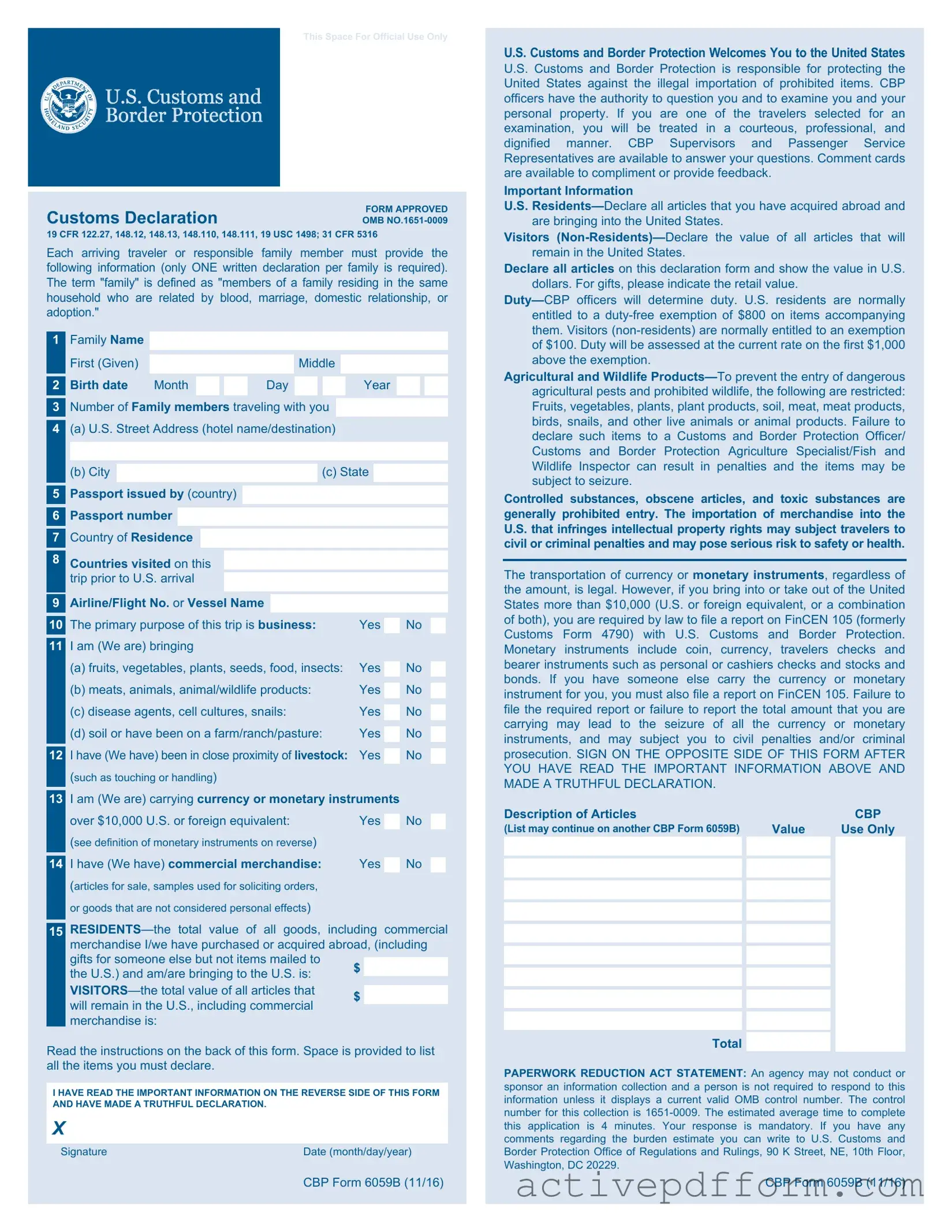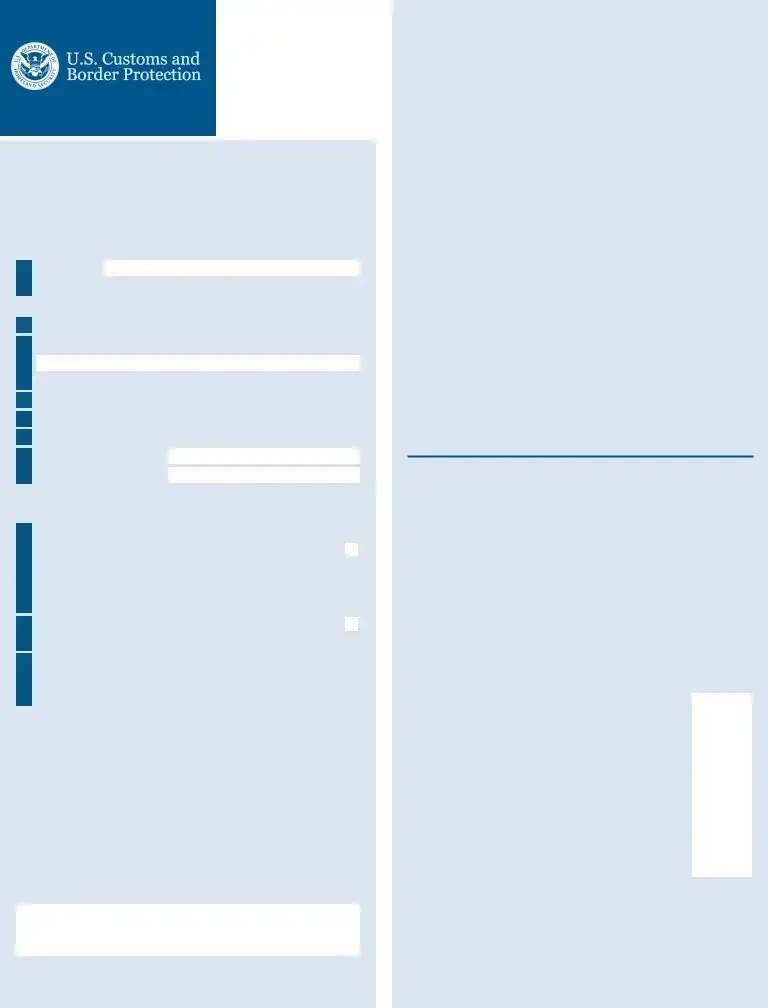What is the CBP 6059B form?
The CBP 6059B form is a customs declaration form used by travelers entering the United States. It collects information about the items you are bringing into the country, including goods, currency, and any items that may be subject to duty or restrictions.
Who needs to fill out the CBP 6059B form?
All travelers, including U.S. citizens and foreign visitors, must complete the CBP 6059B form when entering the United States. This requirement applies whether you are arriving by air, land, or sea.
How can I obtain the CBP 6059B form?
You can obtain the CBP 6059B form at various points of entry into the United States. Customs and Border Protection (CBP) officials typically provide the form on flights and at border crossings. Additionally, you may find it online on the CBP website for reference.
What information do I need to provide on the CBP 6059B form?
The form requires basic information such as your name, address, and passport number. You will also need to declare any items you are bringing into the U.S., including gifts, food, and merchandise. It’s important to be honest and thorough to avoid potential penalties.
What happens if I don’t fill out the CBP 6059B form?
If you fail to fill out the CBP 6059B form, you may face delays at customs or, in some cases, fines. Customs officials may question you about your belongings, and not providing accurate information can lead to complications or seizures of your items.
Can I submit the CBP 6059B form electronically?
Currently, the CBP 6059B form must be completed in paper format. However, some airlines provide a digital version of the form for their passengers to fill out before arrival. Check with your airline for options that may simplify the process.
What should I do if I make a mistake on the CBP 6059B form?
If you realize you made a mistake after submitting the form, inform a CBP officer immediately upon arrival. They can assist you in correcting the information. It is better to address errors proactively to avoid misunderstandings.
Are there any items I cannot bring into the U.S.?
Yes, certain items are prohibited or restricted from entering the U.S. These include illegal drugs, certain food products, and items that may pose a risk to public health or safety. Always check the latest guidelines from the CBP website before traveling.
How long does it take to process the CBP 6059B form at customs?
Processing time for the CBP 6059B form can vary. Typically, it is a quick process, but it may take longer during busy travel times or if there are additional questions about your declaration. Being prepared and having your form ready can help expedite the process.



 (c) State
(c) State 



 No
No
